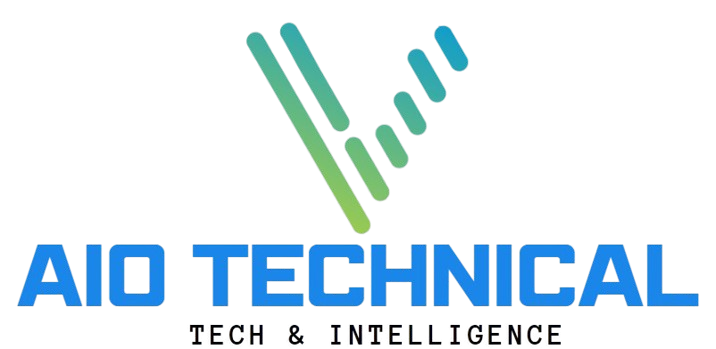GOC Technology : Revolutionizing Global Operations Management

Introduction
In an increasingly interconnected world, GOC Technology (Global Operations Center Technology) has emerged as a critical innovation for organizations seeking to enhance efficiency and streamline operations. This technology serves as a centralized hub, integrating various data streams to provide real-time monitoring, control, and decision-making capabilities across different industries. This article explores the essence of it, its functionality, applications, benefits, challenges, and its future potential.
What is GOC Technology?
GOC Technology encompasses a range of integrated systems designed to manage and optimize global operations. Originating in telecommunications, GOC systems have expanded their reach into various sectors, including energy management, manufacturing, and smart urban development. This technology allows organizations to consolidate information from multiple sources, facilitating a more cohesive approach to operational oversight.
Core Components
Understanding it involves recognizing its essential components, which include:
- Data Collection Tools: Devices that capture real-time data from various operational points.
- Centralized Dashboards: Platforms that display insights and analytics in an accessible format.
- Automated Decision-Making Systems: Algorithms that enable swift responses based on data analysis.
- High-Speed Communication Networks: Often utilizing 5G technology to ensure seamless data transfer and connectivity.
Functions
At its core, GOC Technology operates by aggregating data from diverse sources into a centralized platform. This integration allows organizations to monitor operations in real time, identify issues promptly, and make informed decisions quickly.
Data Integration and Real-Time Analysis
The power of it lies in its ability to integrate data streams for comprehensive analysis. By employing advanced analytics, organizations can identify trends, optimize processes, and anticipate operational challenges before they escalate.
Enhancing Decision-Making
With it, decision-making becomes proactive rather than reactive. The ability to access real-time data allows organizations to adapt swiftly to changing conditions, minimizing disruptions and enhancing overall efficiency.
Applications of GOC Technology Across Industries
The versatility of it allows for its implementation across various sectors, each reaping distinct benefits.
Telecommunications: Optimizing Network Performance
In telecommunications, GOC Technology is vital for managing complex networks. It allows providers to monitor traffic, manage bandwidth, and maintain service quality. Real-time insights lead to reduced downtime and improved customer satisfaction.
Energy Sector: Efficient Grid Management
It plays a significant role in the energy sector by enabling utilities to optimize power distribution and integrate renewable energy sources. Through real-time monitoring, energy providers can predict demand fluctuations and manage resources effectively, ensuring a stable power supply.
Manufacturing: Streamlining Production Processes
In manufacturing, GOC Technology enhances operational efficiency by overseeing automated processes. It helps manufacturers maintain production schedules, monitor machinery health, and quickly address supply chain disruptions, thereby increasing productivity.
Smart Cities: Promoting Sustainable Urban Development
It is essential for developing smart cities, where it enables the management of urban infrastructure. From traffic control to waste management, GOC systems contribute to more sustainable and efficient city environments, improving the quality of life for residents.
Advantages
Organizations adopting GOC Technology benefit from numerous advantages, including:
Increased Efficiency and Productivity
By centralizing control and oversight, GOC systems streamline operations, reduce redundancy, and enhance productivity. This efficiency allows organizations to allocate resources more effectively and respond to changes promptly.
Cost Savings
Implementing it often leads to significant cost reductions. Organizations can minimize downtime, optimize energy usage, and automate routine tasks, resulting in lower operational expenses.
Enhanced Reliability and Risk Management
GOC Tech improves system reliability through real-time monitoring and rapid issue identification. This proactive approach helps mitigate risks associated with operational disruptions, ensuring continuity.
Challenges in Adopting GOC Tech
Despite its many benefits, the adoption of GOC Tech comes with challenges that organizations must navigate.
High Implementation Costs
The initial investment required for GOC Technology can be substantial, particularly for small to medium-sized enterprises. Organizations must weigh the costs against the potential long-term benefits.
Complexity of Integration
Integrating GOC Techn into existing systems can be complex, requiring careful planning and coordination. Organizations may face a learning curve as they adapt to new operational frameworks and processes.
Infrastructure Limitations
In some regions, especially remote areas, inadequate infrastructure can hinder the full implementation of it. Organizations must address these limitations to leverage the technology effectively.
The Future of GOC Technology
The future of GOC Technology is promising, with several trends set to enhance its capabilities.
Advancements in AI and Machine Learning
The continued evolution of artificial intelligence and machine learning will empower it, enabling more sophisticated predictive analytics and automated responses to operational changes.
Expansion of IoT Devices
As the Internet of Things (IoT) expands, GOC Technology will integrate more devices, providing deeper insights and greater control over various operations. This growth will facilitate enhanced monitoring and operational efficiency.
Sustainability Focus
With growing awareness of environmental issues, it is expected to play a pivotal role in promoting sustainable practices. By optimizing resource usage and integrating renewable energy sources, GOC systems will help organizations lower their carbon footprints.
Environmental Impact
One of the most significant advantages of GOC Technology is its potential to reduce environmental impacts. By optimizing energy consumption and improving operational efficiencies, organizations can lower their carbon emissions and contribute to a more sustainable future.
Key Players in the GOC Tech Landscape
Several leading companies are driving innovation in GOC Tech. Industry giants like Cisco, IBM, and Schneider Electric are at the forefront, focusing on scalability, security, and efficiency. Collaborations between these companies and various sectors are essential for shaping the future of GOC systems.
Security and Privacy Considerations
As GOC Tech handles sensitive data, security and privacy are paramount. Organizations must implement robust cybersecurity measures, including encryption and multi-factor authentication, to protect their systems from potential threats.
Implementing GOC Tech in Your Organization
To successfully implement GOC Technology, organizations should take a structured approach:
- Identify Key Areas for Improvement: Evaluate operational processes to determine where GOC systems can deliver significant benefits.
- Engage with a GOC Provider: Collaborate with a technology provider specializing in GOC solutions to tailor a system that meets specific needs.
- Invest in Training and Change Management: Ensure that employees are adequately trained to use the new systems, promoting a smooth transition.
- Monitor Performance and Optimize: Continuously evaluate the effectiveness of it and make necessary adjustments to maximize benefits.
Conclusion
GOC Technology represents a significant leap forward in how organizations manage their operations. By enhancing efficiency, reducing costs, and improving decision-making, GOC systems are reshaping industries and paving the way for a more connected and automated future. As more organizations adopt it, its impact will continue to grow, driving innovation and sustainability across various sectors.
This article has been prepared by the V Aiotechnical.com editorial team, reflecting our commitment to delivering insightful and professional content.
FAQs
What industries benefit most from GOC Tech?
Telecommunications, energy, manufacturing, and smart cities are the primary sectors that gain from GOC Tech.
What challenges are associated with GOC implementation?
High costs, complexity, and infrastructure limitations can pose significant challenges.
How does GOC Tech enhance data security?
GOC systems must incorporate robust cybersecurity measures to safeguard sensitive information and ensure operational integrity.
Can GOC Technology lead to cost savings?
Yes, by optimizing processes and reducing downtime, GOC Technology can lead to substantial cost reductions.
What is the future outlook for GOC Technology?
The future includes advancements in AI, greater integration of IoT devices, and a focus on sustainability and efficiency.





